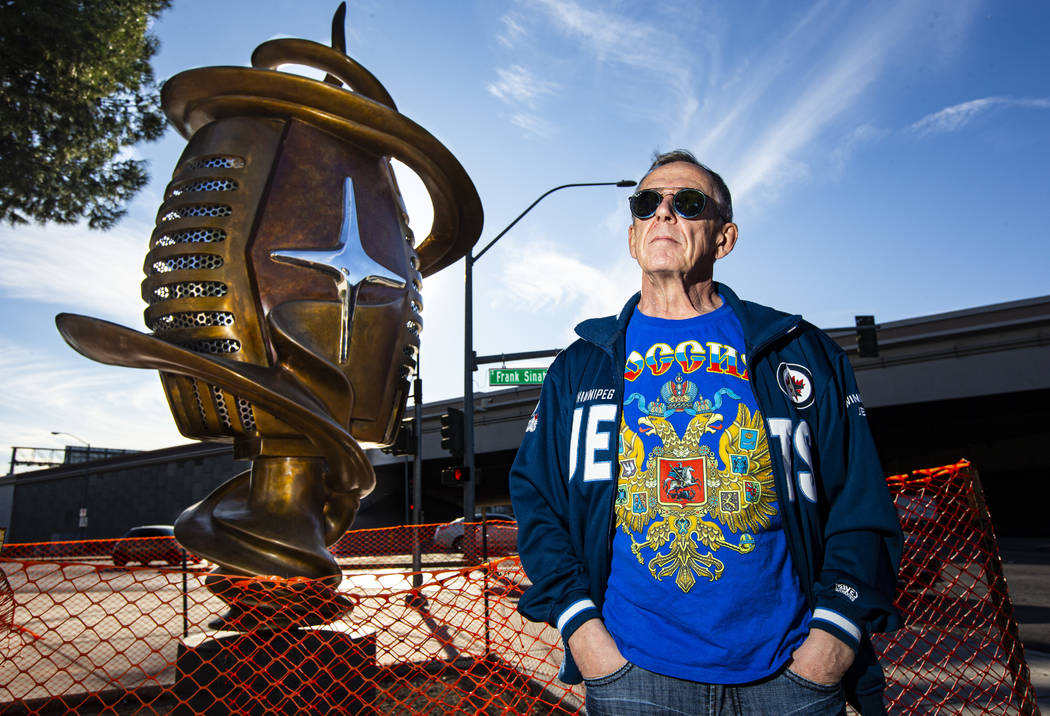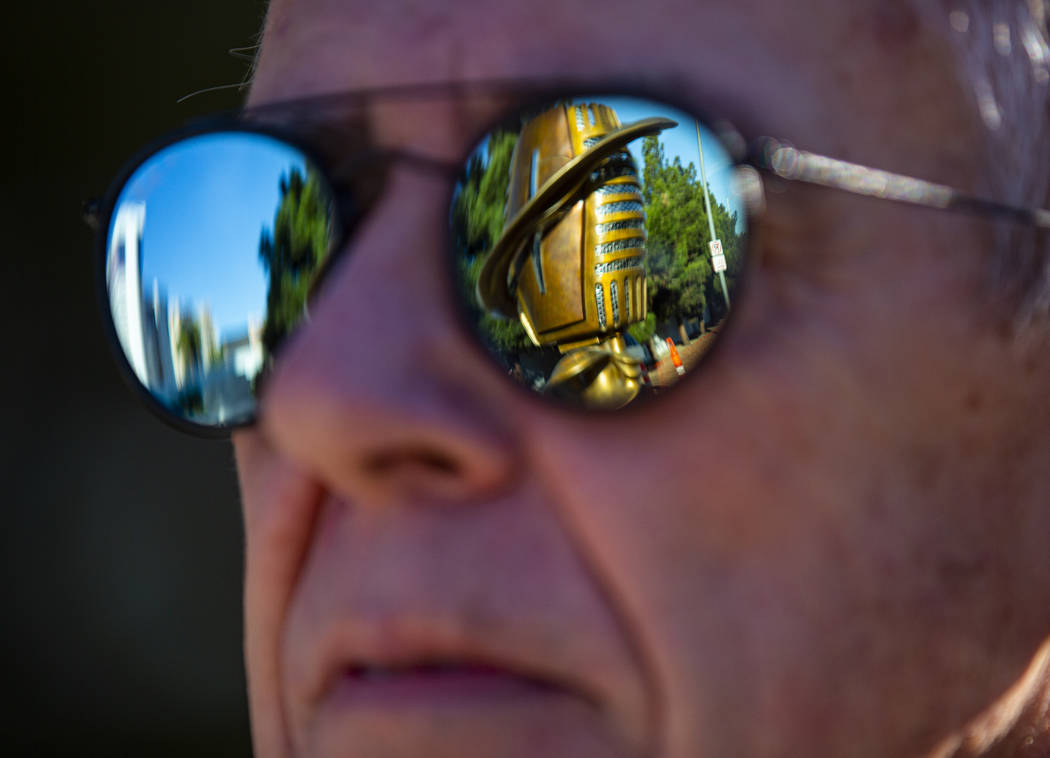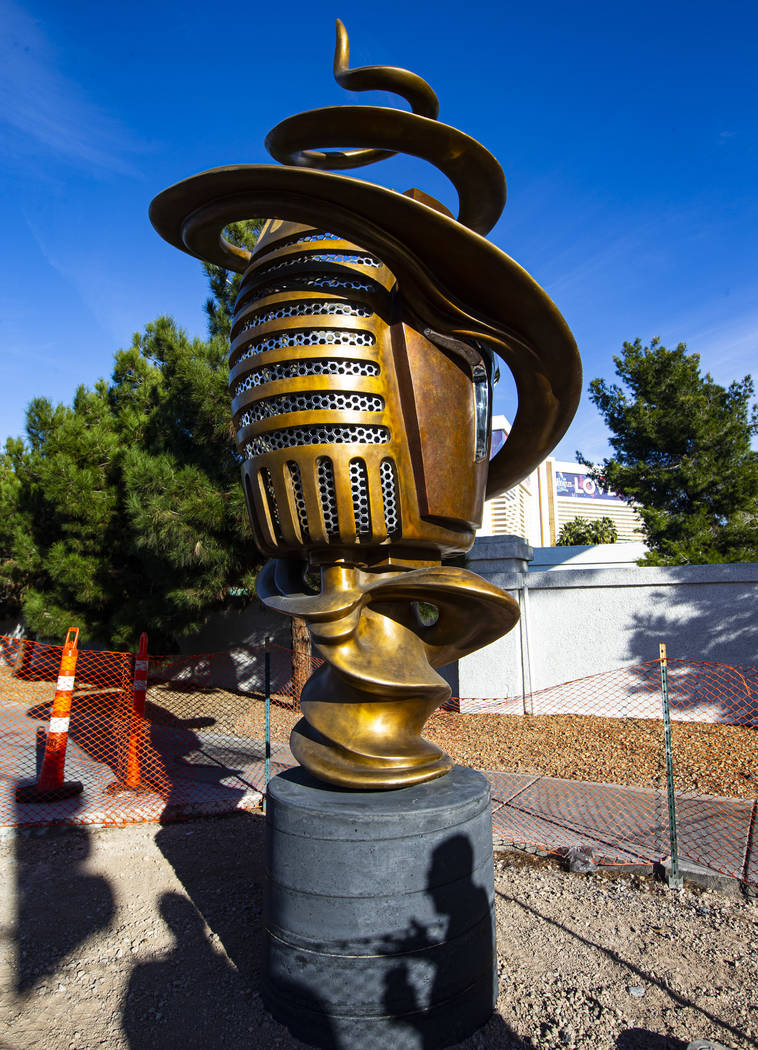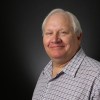Rat Pack and Las Vegas entertainment inspire artist
As an artist, Wayne Littlejohn considers place important to how viewers will experience a piece. So, in planning his latest work, “Spin Baby,” Littlejohn several times visited the site where the sculpture would be located, thinking about how light would hit it, which direction it would face and how its impact might be made more effective.
But beyond all of that, “Spin Baby” benefits from another aspect of place: It’s at the intersection of Dean Martin, Sammy Davis Jr. and Frank Sinatra drives, a perfect location for a sculpture that celebrates Las Vegas entertainers past and present.
The 15-foot-tall sculpture, which will be dedicated at 8:30 a.m. Thursday, references the human voice with what might be an old-time microphone topped, perhaps, by a fedora of the sort Sinatra often wore. From another angle, it could evoke records spinning, or even a face.
It’s all in how viewers look at it, Littlejohn says, and with an estimated 20,000 vehicles passing by daily, the piece — which eventually will be lighted at night — will inspire plenty of viewers to offer their own interpretations.
Littlejohn, 61, was born and raised in Winnipeg, Manitoba, and says he can’t remember not drawing, playing with Lego blocks or making things out of “everything I could make objects out of.”
While he’d always flirted with the notion of becoming a full-time artist, Littlejohn didn’t pursue art studies seriously until his 20s. Instead, “I spent the first decade of my adult life living life, basically trying to figure out who I was,” he says, even while sort of knowing that he someday would be an artist.
So, for several years, Littlejohn strapped on a backpack and traveled, focusing mainly on Asia because it represented such a radical change from what he knew.
“I guess a lot of kids go to Europe when they graduate high school or college. I was never that interested in Europe,” he says. “Asia was the place I wanted to explore.”
Once, he passed through Las Vegas while on his way from Winnipeg to Los Angeles.
“I came through here and had a double gin at 7 in the morning at one casino on Fremont, got back on the bus and headed for L.A.,” he says. “And from L.A., I went to New Zealand and hiked around New Zealand.”
His first sojourn lasted about a year-and-a half. He visited Singapore, Australia, New Zealand, Thailand and Nepal at various times during the early- to mid-’80s and moved to Japan for a few years, returning to Canada periodically to earn an undergraduate degree in painting and installation.
In 1994, Littlejohn moved to Las Vegas to study art at UNLV, earning a master’s of fine arts in painting and installation in 1997 and “really making the full shift into sculpture at that stage.”
Today, he continues creating art — another of his pieces, “Dream Machine,” can be seen at Siegfried & Roy Park, 5525 S. Maryland Parkway — and teaches aspiring artists as a professor at the College of Southern Nevada.
How would you describe your work?
That’s a tough one. I think a lot of my aesthetic has developed through living in Las Vegas. However, I think the direction of it is in keeping with a lot of dimensional work being made these days. … The aesthetic is part of the work, but the basis of the work is the exploration of space.
What went through your mind in creating “Spin Baby”?
I’m always concerned with where (a work is) going to be and how it’s going to be in relation to the site. So I started going down and discovering the site, seeing it from all different angles and perspectives.
What was your goal?
I kind of wanted to do something very much for us in Vegas. … I really wanted to just incorporate that feeling of mid-century Las Vegas. I started to look at the Sands hotel and the type of lounges we have here.
What do you see in “Spin Baby”?
One thing about the piece itself is, I think it incorporates a lot of different aesthetics of the city. When I was creating the piece, I wanted it to reference the early signage and lights and the whole feel of that ’60s lounge culture. Also I wanted a piece (that’s) alive at night like the Rat Pack, so when some electricity is running through the site at night it should be different than during the day.
What’s the significance of the Rat Pack and “Spin Baby”?
I started working with it because of all my travels. It doesn’t matter where I’ve gone in the world, everybody knows Frank Sinatra. It’s really bizarre. People sing Frank Sinatra songs in Japan or Thailand.
Why do so many artists seem so fascinated by Las Vegas?
Vegas is just a place that gives you aesthetic permission to try and do anything. There are no boundaries, and the city itself is a nonstop visual machine.
Yet, it seems that many artists look down on Vegas at the same time.
It is a double-edged sword. Las Vegas has a sort of mythology about it. People are attracted to it but at the same time it’s not to be taken seriously. Sometimes it works in our favor, sometimes not. But if someone thinks Vegas is not worthy of art, (they’re) not looking deep enough.
You’ve done a lot of traveling. Why does travel appeal to you?
It’s quite an eye-opener. We love our little safe zones most of the time. … When you travel around the world, you see all the good and all of the bad. I think traveling is awesome. It connects you to mankind, in a way. I wish everybody would do it.
Contact reporter John Przybys at jprzybys@reviewjournal.com or 702-383-0280. Follow @JJPrzybys on Twitter.




























